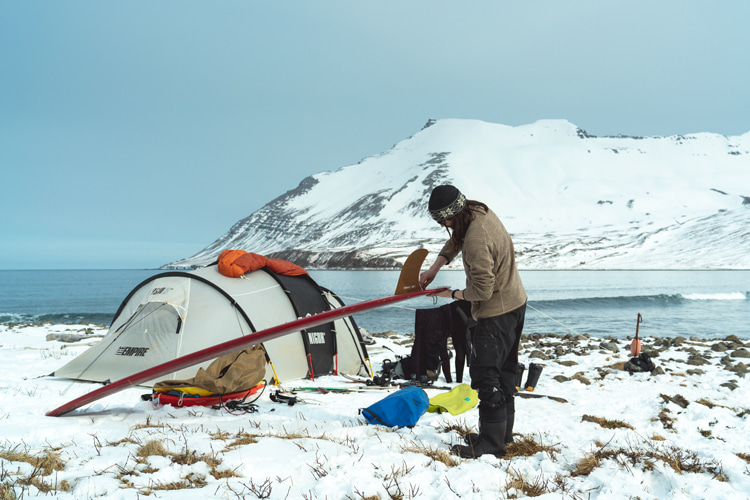Iceland is the land of volcanic fire and ice, but it is also blessed by 4,065 miles (6,542 kilometers) of coastline and ocean water.
It was the last country on the planet to be settled by humans and is one of the most volcanically active locations on Earth.
Iceland is a unique gem, rich in natural resources, and home to the northernmost capital in the world - Reykjavik.
Two-thirds of Icelandics live in the beautiful city settled in 870 by Ingólfur Arnarson.
And although handball is the national sport, there is a growing number of surfers exploring the island's outstanding wave-riding potential.
People are often misled by the low air temperatures, which, on average, are 41.9 °F (5.5 °C). After all, we're just below the Arctic Circle (66°33'49.3'').
But if you look at Iceland's position on the map, you'll quickly realize it lies in the heart of the infamous North Atlantic storms.
Iceland is by far the best Nordic nation regarding surfing conditions - Denmark, Sweden, Norway, and Finland combined may have fewer surf breaks than this remote island.
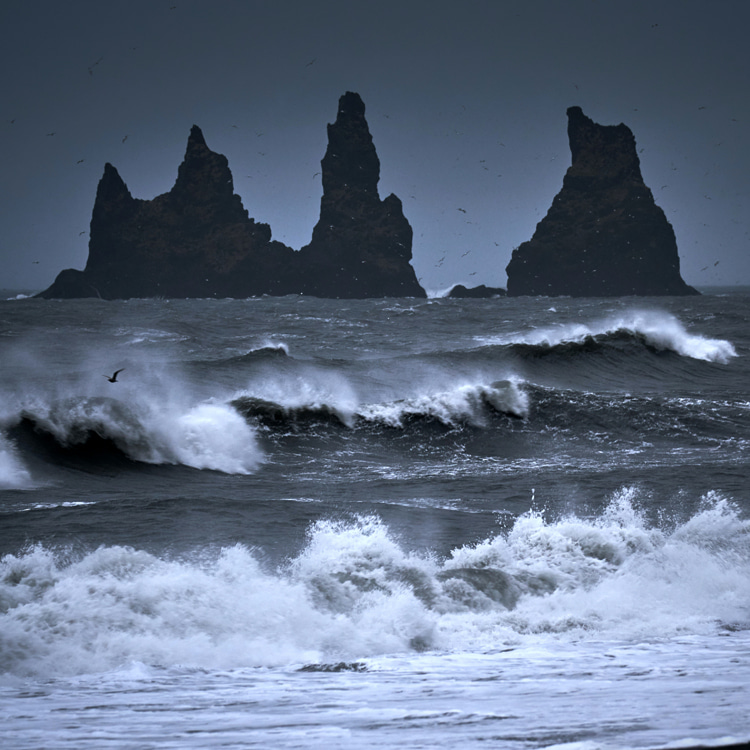
Lava Reef Breaks
The Reykjanes peninsula is the best surfing region in Iceland.
It is located just 30 miles (50 kilometers) west of Reykjavik and produces world-class waves.
For obvious reasons, these lava breaks are often uncrowded, if not mostly empty, even on epic surfing days.
Reykjanes is covered with lava expelled from some of the country's two dozen active volcanoes.
Actually, most of Iceland was formed from volcanic flows, which also added a rugged topography to the territory.
The first international perception of the "Land of Fire and Ice" as a surfing destination emerged in 1970 when Surfer Magazine published a letter from a US serviceman stationed in Iceland.
The communication read, "The waves here are generally very good, and eight-foot surf is common."
According to Matt Warshaw, author of "The Encyclopedia of Surfing," in 1997, a group of California surfers, including Robert Weaver, Donovan Frankenreiter, and Mark Renneker, discovered perfect waves at several breaks around the island.
Ingó Olsen is an Icelandic surfing pioneer who has been exploring his country's rugged coastline, discovering secret spots, and finding new waves.
He also co-founded Arctic Surfers, a group of surf-and-snow explorers that has been mapping Iceland's extreme outdoor locations.
"Iceland's surf culture is made of a small, dedicated, passionate group of men and a few women," Olsen reveals in the book "Fifty Places to Surf Before You Die."
"There is a high level of respect for each other, and we are protective of Iceland's surf environment."
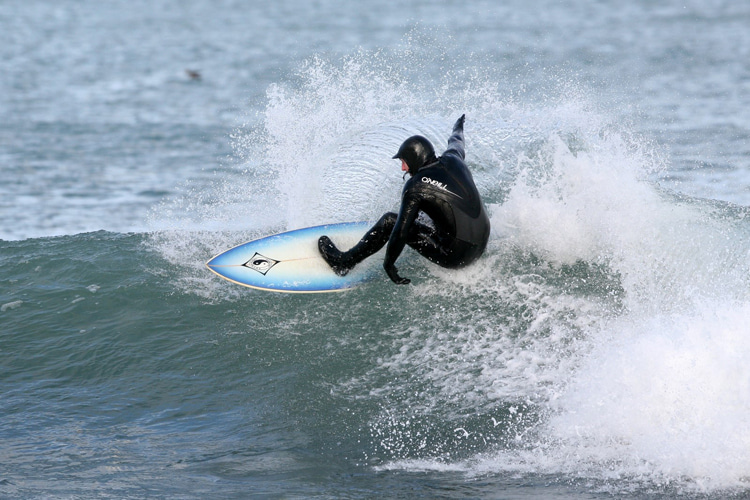
A 360° Window to Atlantic Swells
The truth is that the Nordic nation has everything a country needs when it comes to exposure to swells and winds.
Low-pressure systems generating near Baffin Bay travel around Greenland, sending W, SW, S, and SE groundswells everywhere, including Iceland's Reykjanes peninsula.
The country's jagged coastline then refracts these powerful wave trains and transforms them into spectacular surf arenas.
"Iceland has all kinds of breaks, from beach breaks and mellow point breaks to heavy reef slabs," adds Ingó Olsen.
"But it might be the case that a particular wave only works once or twice a year. You have to have a lot of experience and be willing to travel all over the country to be in the right place at the right time."
The best time of the year to surf in Iceland is winter, but from September through November, you'll get a nice balance of weather and ocean conditions.
The ultra-cold season brings consistent swells despite the short span of daylight, extremely low temperatures, large tidal ranges, raw winds, and snow storms.
Summer usually comes with flat spells.
Nevertheless, remember that Iceland is an open window to swell from any direction, so you really have to pay attention to the surf forecast.
Also, the sun doesn't rise during winter on the northern coastline, and water temperatures are close to zero degrees Celsius.
Ice floes also block northern swells, making it hard to find waves.
The southern, western, and eastern coastlines are warmed by the North Atlantic Drift current, making Iceland more habitable than Greenland, which is just 180 miles (290 kilometers) to the west.
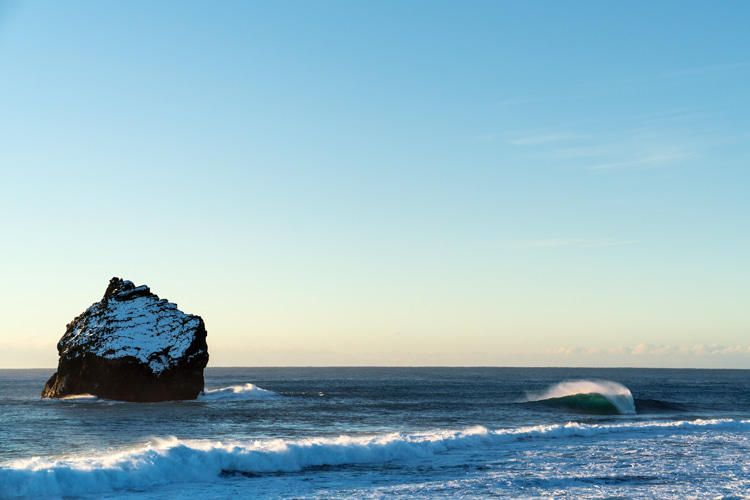
Reykjanes Peninsula: The Capital of Icelandic Surfing
On the northwestern tip of Reykjanes peninsula, you'll find the Garðskagi Lighthouse, in Garður/Suðurnesjabær, a place where swells swing and create soft-shouldered A-frame waves.
Sandvik is a black sand beach break located on the west coast of the Reykjanes peninsula that was first surfed by US Air Force surfers back in the day.
It's the perfect setup for beginner surfers and remarkably consistent, as it picks up a lot of wind and swells.
Grindavik, a fishing town located on the southwestern coastline, is one of the epicenters of Icelandic surfing.
The local spot is a highly consistent right-hand reef break that picks up almost every swell and can be a heavy wave.
It's an intermediate-to-advanced wave that requires experience and skills to tame the fast walls of water and ever-moving waters and avoid the submerged rocks and urchins.
The take-off is tricky and steep, and in overhead sessions, you might be lucky to get barreled at low tide.
Nevertheless, refrain from surfing all by yourself - ask a friend or a guide to join you or keep an eye on you.
Thorli is another right-hand reef break located 37 miles (60 kilometers) east of Grindavik, at the southeast edge of the Reykjanes peninsula.
It handles XXL swells and provides plenty of high-performance, open faces that rarely close out.
Iceland's most popular surf spot features a deep paddling channel that makes it easier to reach the lineup.
Porlákshöfn could also be an interesting alternative beach for beginner and intermediate riders.
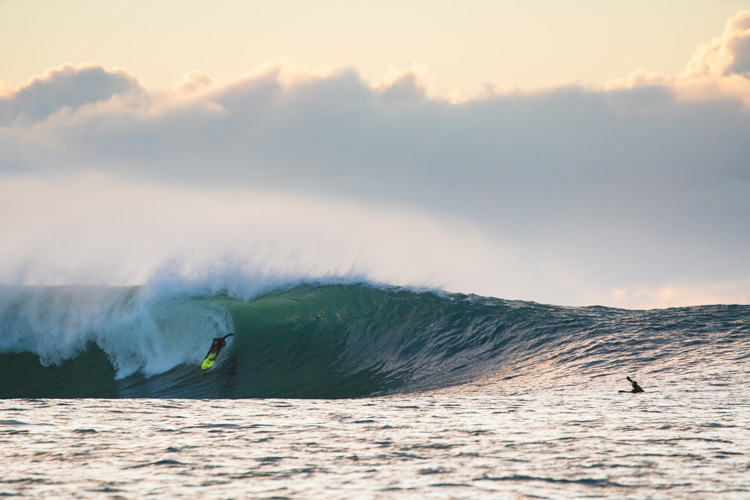
A Surf Trip Through Route 1
"The World Stormrider Guide" suggests a trip around the Nordic country, as there are more golden nuggets besides Reykjanes.
The Snaefellsnes Peninsula is located northwest of Reykjavik.
It also picks up plenty of swell from S-W and features more beach breaks than Reykjanes, with few documented, bona fide surf spots, mainly accessible via 4WD trails.
Westfjords has extensive beach breaks facing S, W, and N on its southern arm around Breiðavík.
Straying off the Route 1 ring road is fraught in bad weather, so checking towns like Blönduós in the north or the east coast from Breiðdalsvík, where Route 1 hits the coast, will be easiest.
Invariably, the tortuously twisting, circuitous, smaller roads will lead to an endless array of ash-grey beach breaks facing every conceivable direction that hold anything from fun longboard peelers to thumping peaks on empty, lonely beaches in cold, biting conditions.
Vik is the southernmost point on the island and attracts any hint of swell down a submarine canyon onto quality black sandbanks.
Challenging, hollow, and powerful with strong rips and massive up to five-meter tides, this is not a spot - or an island - for the faint-hearted.
Get Warm and Play it Safe
Due to the low air and water temperatures, a 6/5/4 mm wetsuit might not be enough to prevent hypothermia.
You should bring a neoprene hood, 7 mm boots and gloves, and consider surfing with a drysuit or another layer underneath your main protection.
Beware of basalt rocks, volcanic reefs, and sharp rocks; inclement weather can move in swiftly and bring thick fogs and sea mists.
The lack of daylight and extreme tides can prevent sessions in winter, and rip currents can be unexpectedly vigorous.
Solo missions are not a good idea, as anywhere off the beaten track is far from help.
But if you're an adventurer at heart, rent a car and embark on Route 1, also known as the Ring Road, the national road that circles Iceland.
You'll be amazed by the country's vast lava deserts, volcanoes, hot springs, glaciers, and geysers.
